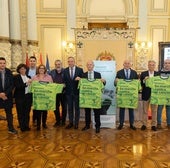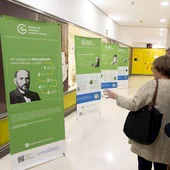Castilla y León studies cancer in people under 50 after increase in incidence


Sunday, October 13, 2024, 9:47 p.m.
Castilla y León is working on a collaborative study to analyze cancer trends among young people in Spain after the past 49 years saw an increase in the incidence of certain types of cancer among people in their 20s. “This phenomenon has attracted the attention of the medical and scientific community, which is seeking to geographically characterize the problem, understand the causes and mechanisms of this increase and find effective solutions,” explains the General Directorate of Public Health of the Ministry of Health. He is confident that results will be seen by the end of the year.


The Spanish Network of Cancer Registries (Redecan), to which the Castile and León Population Cancer Registry (RpcCyL) belongs, predicts a 2.6% increase in cancer incidence in Spain in 2024 compared to the previous year. In particular, Ikala estimates the number of incidents for 2024 to be 286,664, of which 161,678 are among men and 124,986 among women. It is likely that this increase observed in the general population will also affect young people, a group that has traditionally had the lowest rates of cancer.
“To have scientific evidence of this possible increase, continuous and accurate cancer monitoring over long periods of time is needed to allow data collection and research to be conducted to better understand the reasons for the possible increase in cancer incidence in young people” and therefore to “ develop effective prevention strategies,” although the main ones are always a healthy lifestyle, the Mediterranean diet and the elimination of toxins such as alcohol, tobacco, and now overly sugary drinks.
Observing whether specific protocols are needed for this group is one of the goals of this study carried out by the national network of Redecan registries, which, in addition to the Castile and León registries, includes the registries of Asturias, the Canary Islands, Castellón, Euskadi. Girona, Granada, La Rioja, Mallorca, Murcia, Navarre and Tarragona were added.
Offline map
The Castile and León Population Cancer Registry was launched in 2005 in the provinces of León, Soria and Valladolid and was gradually implemented in the rest of the region, closing the card in 2010. For these reasons, it contains data only for the entire territory of the period 2011-2016, a six-year period, “a short period that does not allow the analysis of possible changes in cancer incidence among young people who, on the other hand, given the population pyramid of the community, represent a small percentage of the total number of tumors.
Specifically, according to these data, in Castile and León, four out of every 100,000 young men and seven out of every 100,000 young women suffer from cancer every year, excluding skin tumors other than melanoma. This means that 8.3% of cancers are diagnosed between the ages of 20 and 49, more often in women than men, and between the ages of 40 and 49.
In contrast to what happens in the general population, in young people cancer is more common in women than in men. This is 5% of men and 13.7% of women. And if among the male population the cancer with the highest incidence is prostate cancer, then among young people it is testicular cancer (12.2% of cases), in second place is colon and rectum (9.8%), while the incidence is 13 cases of testicular cancer and 10 cases of colorectal cancer per 100,000 people.
In young women, as in the rest of the population of this sex, the most common cancer is breast cancer (46.3%), followed by thyroid cancer (9.7%), and in the group of women in general colorectal cancer is second. This means that 88 out of every 100,000 young women are diagnosed with breast cancer each year, and 18 out of every 100,000 are diagnosed with thyroid cancer.
With the exception of testicular cancer, where the highest number of cases occurs between the ages of 30 and 39 years, the incidence of cancer increases with age, so that in young adults, 68.1% of tumors are diagnosed in people between 40 and 49 years of age; 24.2% among those aged 30 to 39 and 7.7% among those aged 20 to 29.
